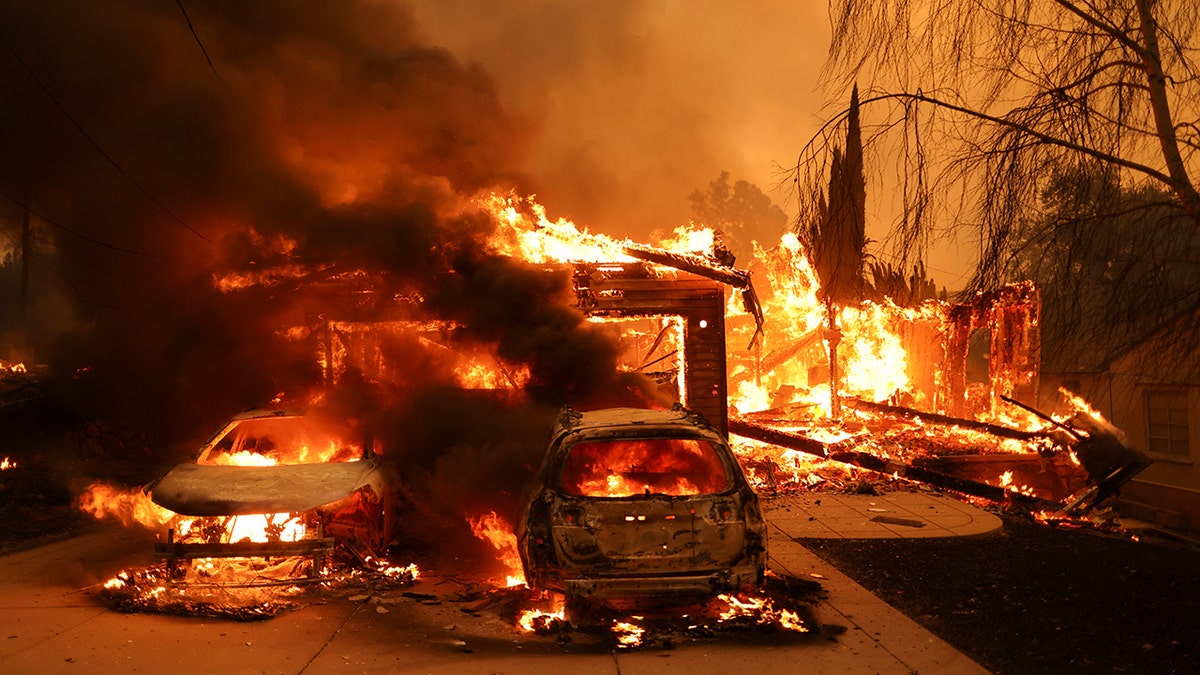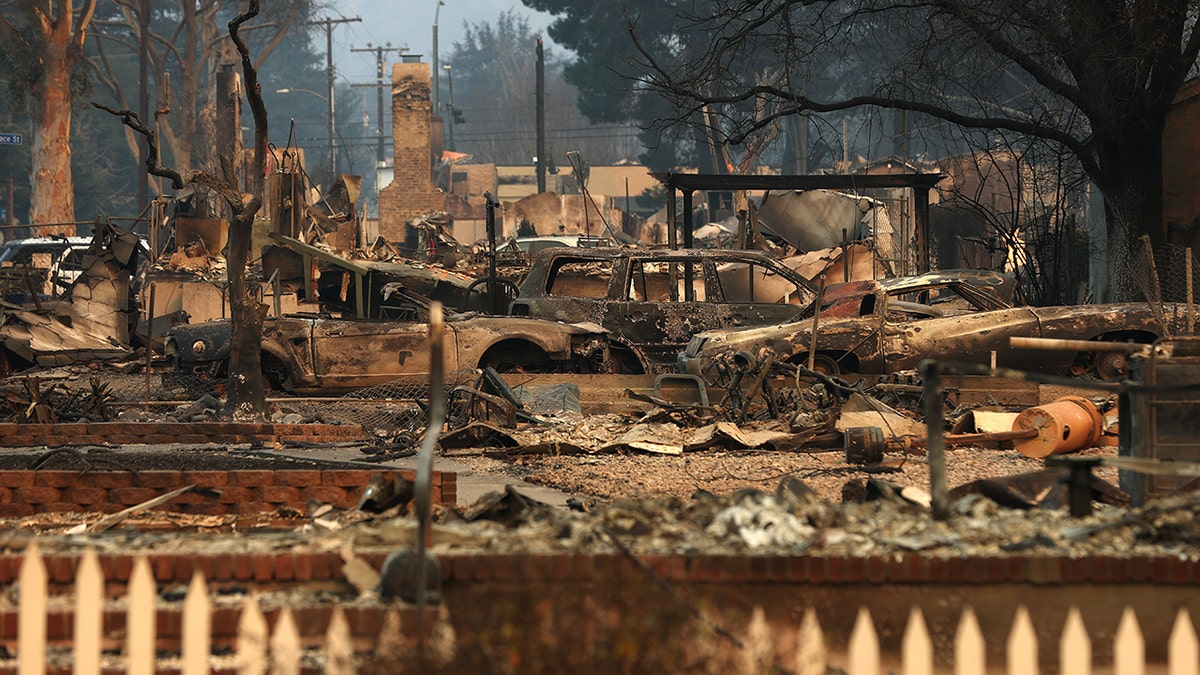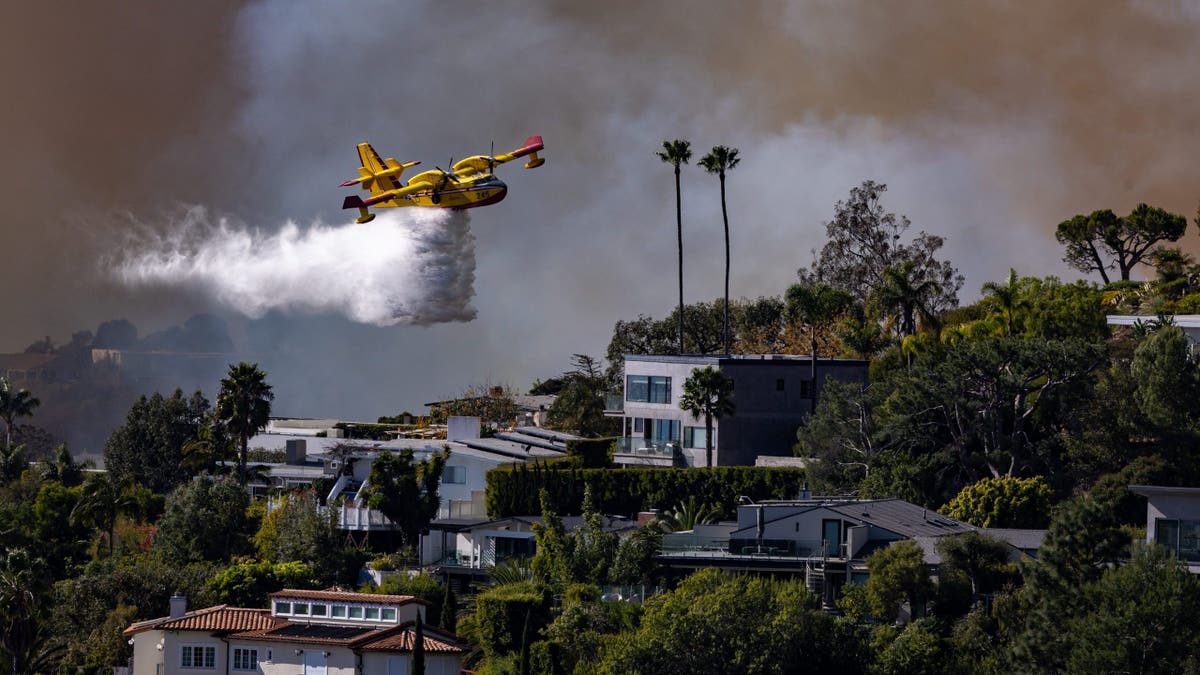The devastating Palisades and Eaton Fires, which scorched nearly 40,000 acres across the Los Angeles area, have finally reached 100% containment as of Friday, according to fire officials. The Palisades Fire consumed 23,448 acres on the west side of Los Angeles, while the Eaton Fire, ignited on January 7th, burned through 14,201 acres, as reported by the California Department of Forestry and Fire Protection (Cal Fire).
These two major blazes, along with several smaller fires, collectively represent the most destructive natural disaster in Los Angeles County's history. Cal Fire confirmed a tragic loss of 28 lives and widespread damage or destruction to over 16,000 structures. At the peak of the crisis, Los Angeles County officials reported that 180,000 residents were forced to evacuate their homes. AccuWeather, a private forecasting agency, estimates the damage and economic losses to exceed a staggering $250 billion.

The caption for the above image reads: Vehicles and a house are engulfed in flames as strong winds propel devastating wildfires across the Los Angeles area, forcing evacuations during the Eaton Fire in Altadena, California, on January 8, 2025. (REUTERS/David Swanson)
Recent rainfall in Southern California provided much-needed assistance to firefighters in containing the blazes. However, it also brought with it the heightened risk of flash floods and mudslides in the hilly terrain, along with concerns about the spread of hazardous materials left in the fire's wake.

The caption for the image above is: Homes destroyed by the Eaton Fire are seen on January 9, 2025, in Altadena, California. (Justin Sullivan/Getty Images)
While full containment has been achieved, fire officials emphasize that this is largely symbolic. Isolated fires continue to smolder in the challenging, steep terrain of the mountains. Los Angeles Fire Department spokesperson Margaret Stewart clarified to Reuters that the more significant milestone was halting the fires' forward progress, which occurred roughly a week after the Palisades and Eaton fires initially swept through the region.

This image shows a Super Scooper plane dropping water on the Palisades fire on Tuesday, Jan. 7, 2025, in Pacific Palisades, California. (Brian van der Brug / Los Angeles Times via Getty Images)
Stewart noted that the recent rain, while helpful in some respects, presented new challenges. It triggered mudslides and obstructed roads essential for first responder access, leading her to remark that the rain would have been more beneficial had it arrived two weeks earlier.
Comments(0)
Top Comments